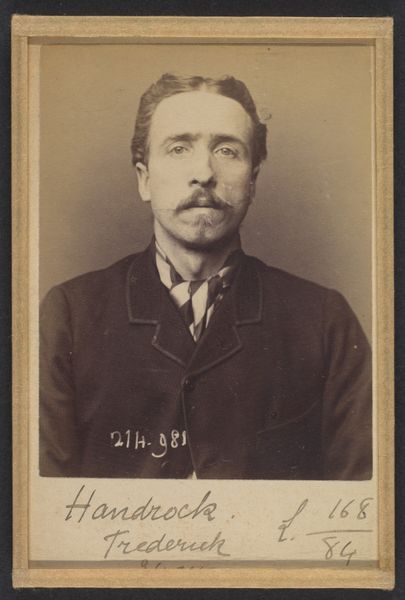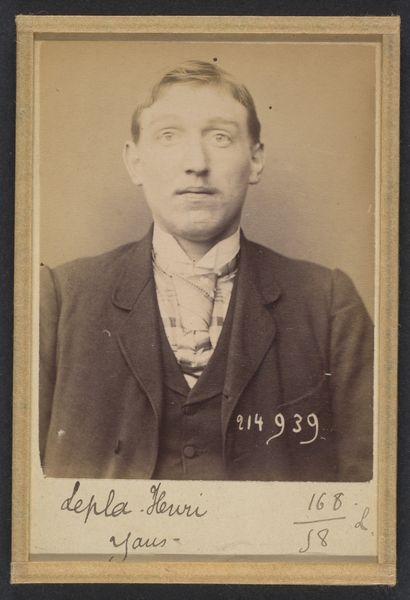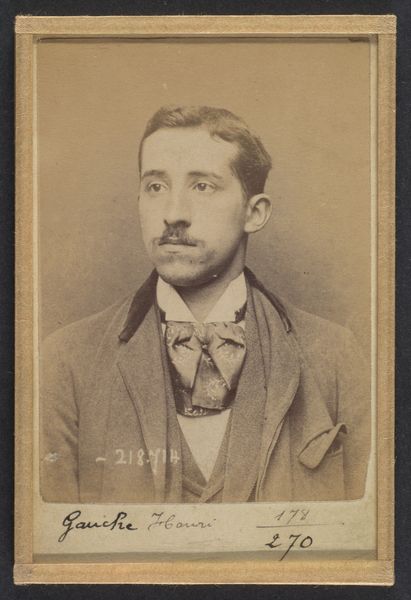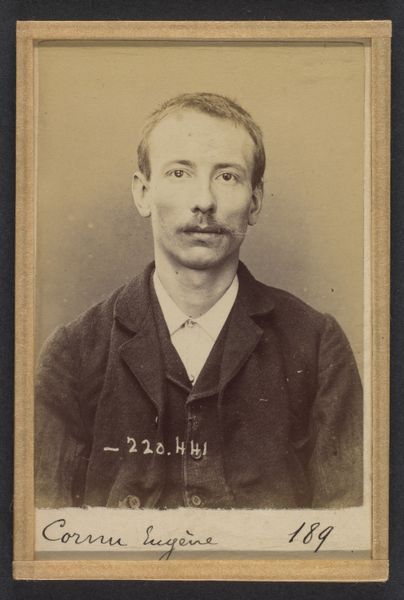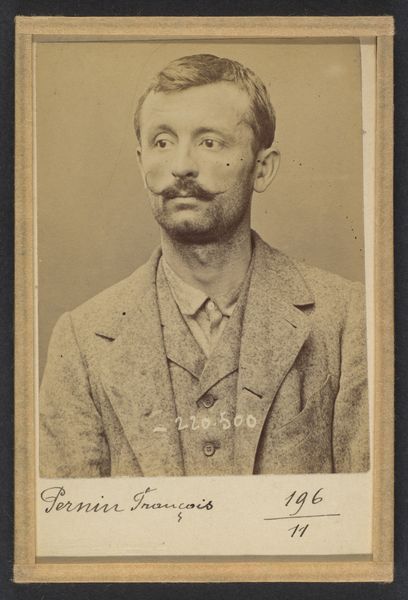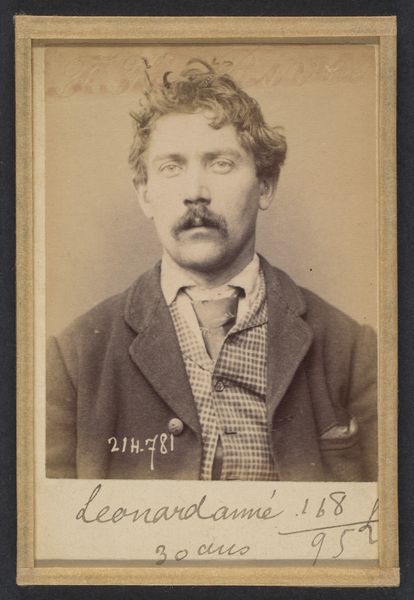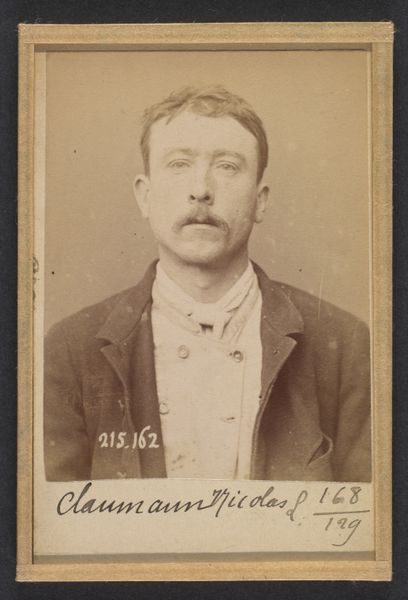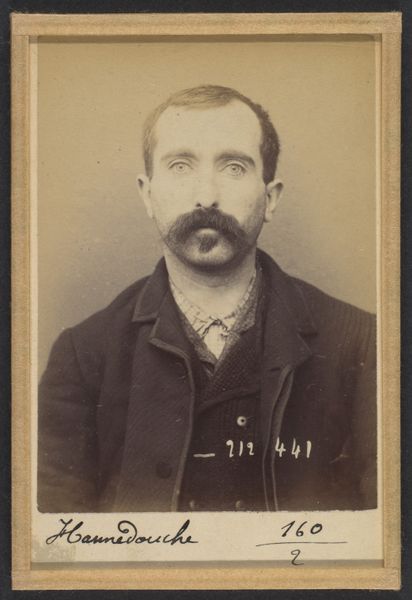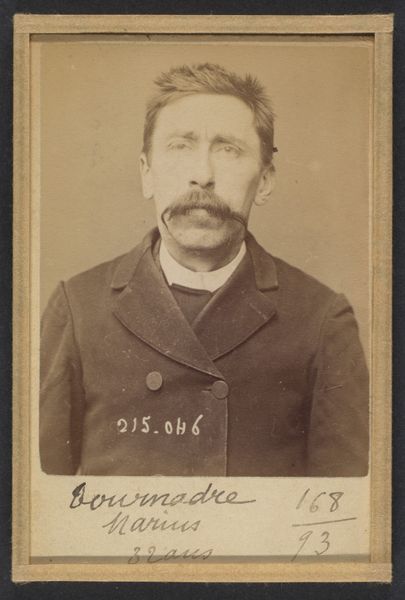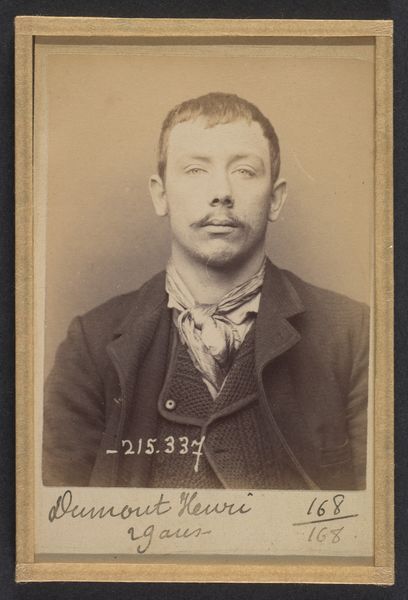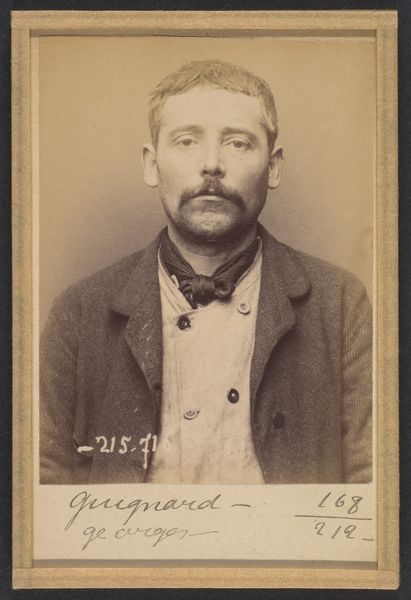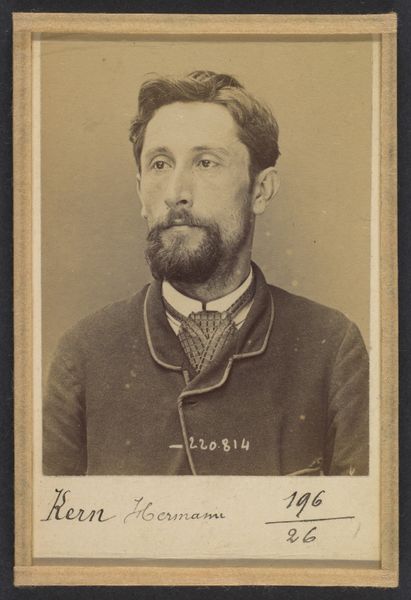
Ripert. Thomas. 33 ans, né à Marseille. Cocher. Anarchiste. 5/3/94. 1894
0:00
0:00
photography, gelatin-silver-print
#
portrait
#
african-art
#
portrait
#
street-photography
#
photography
#
gelatin-silver-print
#
men
#
poster
Dimensions: 10.5 x 7 x 0.5 cm (4 1/8 x 2 3/4 x 3/16 in.) each
Copyright: Public Domain
Editor: Here we have Alphonse Bertillon's "Ripert. Thomas. 33 ans, né à Marseille. Cocher. Anarchiste. 5/3/94," a gelatin silver print from 1894. It's a mugshot, but something about the subject's gaze feels…confrontational, almost defiant. How should we interpret this piece? Curator: This photograph isn’t simply a mugshot, it’s a key artifact within the history of criminal justice. Bertillon was a pioneer in applying scientific methods to policing, developing a system of identification called "Bertillonage," which relied on detailed measurements and standardized photography. Look at how this image aims to present 'objective' evidence. Editor: So, the purpose was purely documentation, almost scientific? Curator: Exactly. However, the political and social context complicates this objectivity. Consider the late 19th century: anxieties surrounding anarchism were high. Photography like this wasn't neutral. It served to categorize, control, and ultimately, criminalize certain populations. How do you think this photograph might have influenced public perception of anarchists? Editor: It definitely dehumanizes Ripert, turning him into a label, "Anarchist", reducing his humanity to a single, politically charged word. Almost like propaganda. Curator: Precisely. This photograph becomes a tool of power, reinforcing existing societal prejudices. Bertillon’s method helped shape the visual language of criminality. Editor: That's a perspective I hadn’t fully considered. Seeing it as more than just a portrait, but as an instrument of social control really changes how I view this piece. Curator: And that's precisely why considering the historical context is critical in art history; the public role of the piece unveils a far deeper meaning.
Comments
No comments
Be the first to comment and join the conversation on the ultimate creative platform.
